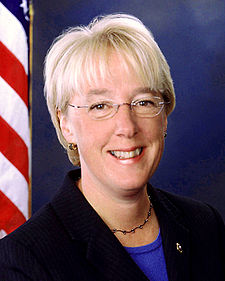In my recap of the 112th Avenue East Link options, I mentioned that Option 4 would likely gain the most traction among South Bellevue residents. What I didn’t mention is that it could brew an internal conflict among the pro-B7 faction. While the Bellevue Club and Surrey Downs has been nearly unanimous in their call to push Link far far away to I-405, the two could probably not disagree more on a 112th Ave option.
The Bellevue Club, which I said would likely lose a few tennis courts and street-side landscaping, has been pushing for Option 2, a west-side running option which would ironically displace 46 residences, most, if not all, from Surrey Downs. While the club is still fervent in promoting B7, we know that ST has no interest in advancing that option.
Surrey Downs, on the other hand, campaigned on the whole premise that they would not have their residences impacted, much less torn down for silly screeching trains. Outside of their support for B7, they have clung tight to Option 4, which would burrow a retained cut on the east-side of 112th.
In a letter to their members, the Bellevue Club’s rationale:
The impacts of the center and eastern alignments cannot be mitigated and permanently affect the use of the Club. Commencing with a construction period estimated beyond two years, excavation of 22,000 SF of green belt 635 feet long removes the west side of the property. The character of the our garden setting is blighted beginning with the removal of thirty year old pines on 112th Ave SE. More troubling is the loss of outdoor recreation areas, four tennis courts, pool decks, garden decks, water elements and patios all positioned most favorably on the west side of our property.
…The western alignment as it passes Surrey Downs would impact only two homes which is less than 1% of that neighborhood. As to the Carriage Place Condominiums north of Surrey Downs, from discussions we have had we feel, if appropriately compensated, would welcome selling…
Outdoor recreation areas, patios, and more…all worth the displacement of 46 homes (not just two, as the letter states)! Considering the general apathy about the displacements coming from this letter, it seems unfair that Sound Transit should be the only scapegoat here.







 The East Link project expands light rail from Downtown Seattle to Mercer Island, downtown Bellevue, and the Overlake Transit Center with stations serving Mercer Island, South Bellevue, downtown Bellevue, Bel-Red and Overlake areas. For those interested, Sound Transit will be holding the following public meetings in July:
The East Link project expands light rail from Downtown Seattle to Mercer Island, downtown Bellevue, and the Overlake Transit Center with stations serving Mercer Island, South Bellevue, downtown Bellevue, Bel-Red and Overlake areas. For those interested, Sound Transit will be holding the following public meetings in July:
 Sound Transit and the City of Seattle will be holding an open house at Seattle’s Hong Kong Building at the Summer Festival on Saturday, July 10th to discuss recent developments and the next steps involved with constructing the First Hill Streetcar line connecting the Capitol Hill and International District LINK Light Rail stations.
Sound Transit and the City of Seattle will be holding an open house at Seattle’s Hong Kong Building at the Summer Festival on Saturday, July 10th to discuss recent developments and the next steps involved with constructing the First Hill Streetcar line connecting the Capitol Hill and International District LINK Light Rail stations.









